Lesson 28: Matthew 25:1–13
New Testament Seminary Teacher Manual, 2016
Introduction
As Jesus Christ privately taught His disciples on the Mount of Olives about His Second Coming, He taught the parable of the ten virgins.
Suggestions for Teaching
Matthew 25:1–13
Jesus Christ teaches the parable of the ten virgins
Invite a student to read aloud the following account told by Elder Jeffrey R. Holland of the Quorum of the Twelve Apostles about a young returned missionary who shared a personal experience in a testimony meeting. Invite students to imagine how they might feel if they were the young man in this story.
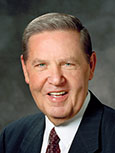
“He … told of coming home from a date shortly after he had been ordained an elder at age 18. Something had happened on this date of which he was not proud. He did not go into any details, nor should he have done so in a public setting. To this day I do not know the nature of the incident, but it was significant enough to him to have affected his spirit and his self-esteem.
“As he sat in his car for a while in the driveway of his own home, thinking things through and feeling genuine sorrow for whatever had happened, his nonmember mother came running frantically from the house straight to his car. In an instant she conveyed that this boy’s younger brother had just fallen in the home, had hit his head sharply and was having some kind of seizure or convulsion. The nonmember father had immediately called for an ambulance, but it would take some time at best for help to come.
“‘Come and do something,’ she cried. ‘Isn’t there something you do in your Church at times like this? You have their priesthood. Come and do something.’ …
“… On this night when someone he loved dearly needed his faith and his strength, this young man could not respond. Given the feelings he had just been wrestling with and the compromise he felt he had just made—whatever that was—he could not bring himself to go before the Lord and ask for the blessing that was needed” (“The Confidence of Worthiness,” Liahona, Apr. 2014, 58–59).
- • What would you be thinking if you were the young man in this situation? Why is it so important to always be prepared?
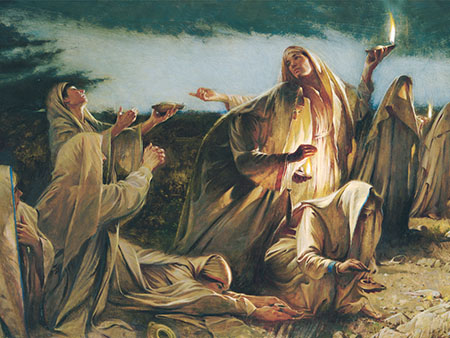
Display the picture Parable of the Ten Virgins (Gospel Art Book [2009], no. 53; see also LDS.org). Remind students that while Jesus Christ was on the Mount of Olives with His disciples, He taught them about His Second Coming (see Matthew 24). He then gave the parable of the ten virgins to illustrate how to be prepared for His Second Coming.
Invite a student to read Matthew 25:1–4 aloud. Ask the class to follow along, looking for the main elements of the parable. Invite them to report what they find. Write the following phrases on the board:
The bridegroom
Wise and foolish virgins
Lamps and oil
Explain that according to Jewish wedding customs, the groom, or bridegroom, accompanied by his close friends, would go at night to the bride’s house for the wedding ceremony. Following the ceremony, the wedding party would proceed to the groom’s house for a feast. Wedding guests who joined the procession were expected to carry their own lamps or torches to indicate they were part of the wedding party and to add to the brightness and beauty of the occasion.
Invite several students to take turns reading aloud fromMatthew 25:5–13. Ask the class to follow along, looking for what the five wise virgins did and what the five foolish virgins did.
- • What did the five wise virgins do? What did the five foolish virgins do?
Refer to the elements of the parable written on the board. Ask the class to suggest what they think each element might represent.
Write Jesus Christ next to The bridegroom on the board. Explain that the phrases “while the bridegroom tarried” (verse 5) and “at midnight there was a cry made” (verse 6) refer to the Second Coming of Jesus Christ.
- • What can we learn about the Second Coming of Jesus Christ from these phrases?
Explain that both the wise and the foolish virgins, who were invited to the feast, represent members of the Church (see Dallin H. Oaks, “Preparation for the Second Coming,” Ensign or Liahona, May 2004, 8). WriteMembers of the Church next to Wise and foolish virgins on the board.
Invite students to review Matthew 25:8–9 and ponder why the wise virgins did not give their oil to the foolish virgins. Ask a student to read aloud the following statement by President Spencer W. Kimball. Invite the class to listen for what the oil can represent and why it could not be shared.
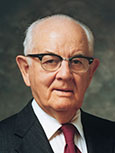
“This was not selfishness or unkindness. The kind of oil that is needed to illuminate the way and light up the darkness is not shareable. How can one share obedience to the principle oftithing; a mind at peace from righteous living; an accumulation of knowledge? How can one share faith or testimony? How can one share attitudes or chastity, or the experience of a mission? How can one share temple privileges? Each must obtain that kind of oil for himself. …
“In the parable, oil can be purchased at the market. In our lives the oil of preparedness is accumulated drop by drop in righteous living. … Each act of dedication and obedience is a drop added to our store” (Faith Precedes the Miracle[1972], 255–56).
- • What does the oil in the parable represent? (Write students’ answers, such as spiritual preparation, testimony, faith, conversion, and experience, next toLamps and oil on the board. To provide additional insight into the symbolism of the oil, you may want to suggest that students read Doctrine and Covenants 45:56–57 and cross-reference it with Matthew 25:8.)
- • What truth can we learn from the parable and from President Kimball’s comments about borrowing spiritual preparation? (After students respond, write the following truth on the board: We cannot borrow spiritual preparation from others.)
- • What truth do we learn from the parable about how to prepare for the Second Coming? (Students may use different words, but make sure they identify the following truth: We prepare for the Second Coming by increasing our testimony and conversion through daily righteousness. Write this truth on the board.)
Preparing for the Lord’s Second Coming
To prepare for the Lord’s Second Coming, I will add “oil” to my “lamp” by:
© 2015 by Intellectual Reserve, Inc. All rights reserved.
After sufficient time, ask a few students to share some of their ideas with the class.
Ask a student to read Matthew 25:10–12 aloud. Invite the class to follow along, looking for what the bridegroom said to the foolish virgins. Ask students to report what they find.
Explain that Joseph Smith Translation, Matthew 25:11 clarifies that the bridegroom said, “Ye know me not” (inMatthew 25:12, footnote a).
- • What does the statement “ye know me not” tell us about the five foolish virgins? How is knowing the Lord different from merely knowing about Him?
- • What can we learn from this verse about what we must do to be ready for the Lord’s coming? (Help students identify the following principle: To be ready for the Lord’s coming and be worthy to remain in His presence, we must come to know Him.)
- • In what ways have you recently come to know the Savior better?
Remind students of the story from the beginning of the lesson about the young priesthood holder who was unprepared in a moment of need. Explain that the young man rushed to the house of an older man in his ward who lived down the street. The older man gave the younger brother a blessing that stabilized his condition until paramedics arrived. Invite a student to read aloud the young man’s testimony as related by Elder Holland:

“‘No one who has not faced what I faced that night will ever know the shame I felt and the sorrow I bore for not feeling worthy to use the priesthood I held. It is an even more painful memory for me because it was my own little brother who needed me and my beloved nonmember parents who were so fearful and who had a right to expect more of me. But as I stand before you today, I can promise you this,’ he said. ‘I am not perfect, but from that night onward I have never done anything that would keep me from going before the Lord with confidence and asking for His help when it is needed. Personal worthiness is a battle in this world in which we live,’ he acknowledged, ‘but it is a battle I am winning. I have felt the finger of condemnation pointing at me once in my life, and I don’t intend to feel it ever again if I can do anything about it. And, of course,’ he concluded, ‘I can do everything about it’” (“The Confidence of Worthiness,” 59).
Ask students to consider what they need to do to be spiritually prepared for the Lord’s coming and to be worthy to remain in His presence. You might encourage them to circle one or two of the actions they listed on the handout and to set a goal to act in ways that will increase their spiritual preparedness. Invite them to take their handouts home as a reminder of their goals.
Commentary and Background Information
Matthew 25:1–4. Wise and foolish virgins
Elder Dallin H. Oaks of the Quorum of the Twelve Apostles taught who the ten virgins represent:
“The ten virgins obviously represent members of Christ’s Church, for all were invited to the wedding feast and all knew what was required to be admitted when the bridegroom came. But only half were ready when he came” (“Preparation for the Second Coming,” Ensign or Liahona, May 2004, 8).
Matthew 25:1–13. The parable of the ten virgins and our testimonies
Elder David A. Bednar of the Quorum of the Twelve Apostles explained:
“I now want to use one of many possible interpretations of the parable of the ten virgins to highlight the relationship between testimony and conversion. Ten virgins, five who were wise and five who were foolish, took their lamps and went to meet the bridegroom. Please think of the lamps used by the virgins as the lamps of testimony. The foolish virgins took their lamps of testimony but took no oil with them. Consider the oil to be the oil of conversion. …
“Were the five wise virgins selfish and unwilling to share, or were they indicating correctly that the oil of conversion cannot be borrowed? Can the spiritual strength that results from consistent obedience to the commandments be given to another person? Can the knowledge obtained through diligent study and pondering of the scriptures be conveyed to one who is in need? Can the peace the gospel brings to a faithful Latter-day Saint be transferred to an individual experiencing adversity or great challenge? The clear answer to each of these questions is no.
“As the wise virgins emphasized properly, each of us must ‘buy for ourselves.’ These inspired women were not describing a business transaction; rather, they were emphasizing our individual responsibility to keep our lamp of testimony burning and to obtain an ample supply of the oil of conversion. This precious oil is acquired one drop at a time—‘line upon line [and] precept upon precept’ (2 Nephi 28:30), patiently and persistently. No shortcut is available; no last-minute flurry of preparation is possible.
“‘Wherefore, be faithful, praying always, having your lamps trimmed and burning, and oil with you, that you may be ready at the coming of the Bridegroom’ (D&C 33:17)” (“Converted unto the Lord,” Ensign or Liahona, Nov. 2012, 109).
Elder Bruce R. McConkie of the Quorum of the Twelve Apostles described the ten virgins:
“Five are zealous and devoted, while five are inactive and lukewarm; ten have the testimony of Jesus, but only five are valiant therein” (Doctrinal New Testament Commentary, 3 vols. [1965–73], 1:685).
Matthew 25:6. The significance of the bridegroom coming at midnight
Jesus Christ will come when we do not expect it. President Spencer W. Kimball explained:
“The foolish virgins were not averse to buying oil. They knew they should have oil. They merely procrastinated, not knowing when the bridegroom would come. …
“Midnight is so late for those who have procrastinated” (Faith Precedes the Miracle [1972], 256).
Matthew 25:7. The virgins “arose, and trimmed their lamps”
The phrase “trimmed their lamps” (Matthew 25:7) means that the virgins cut the wicks of their lamps in a way that would allow for a bright flame.

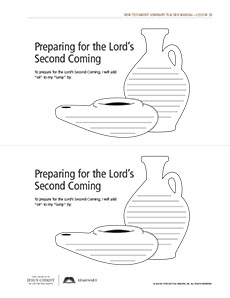
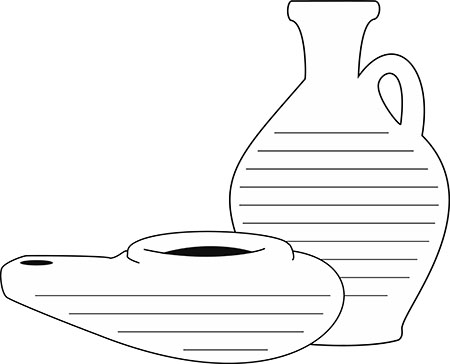
沒有留言:
張貼留言